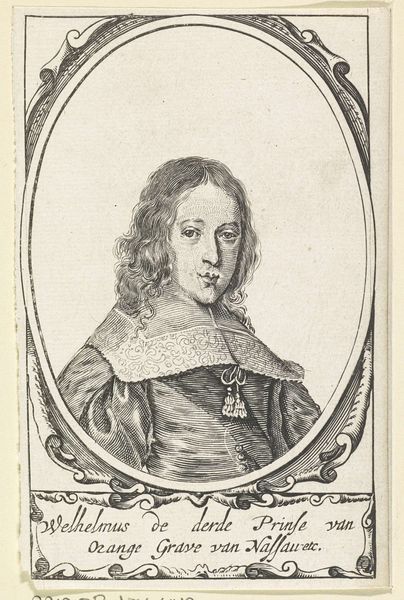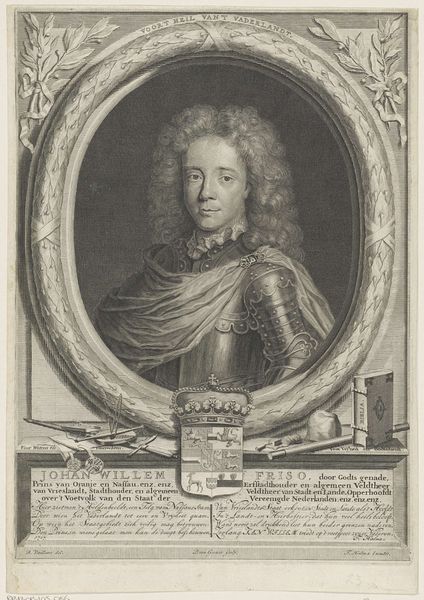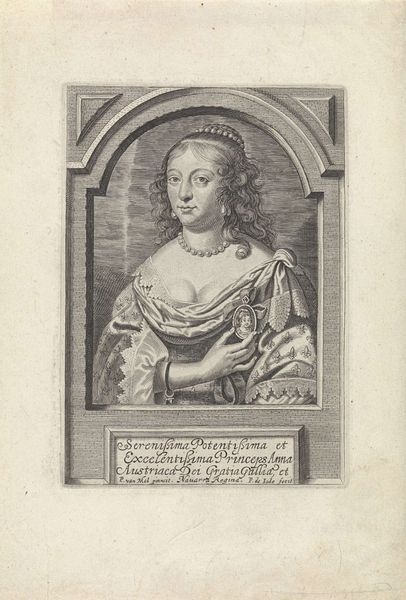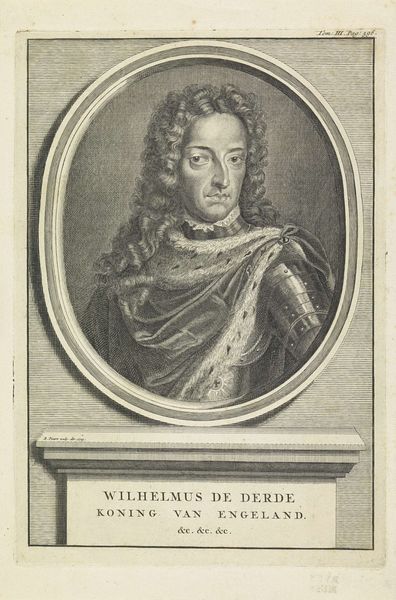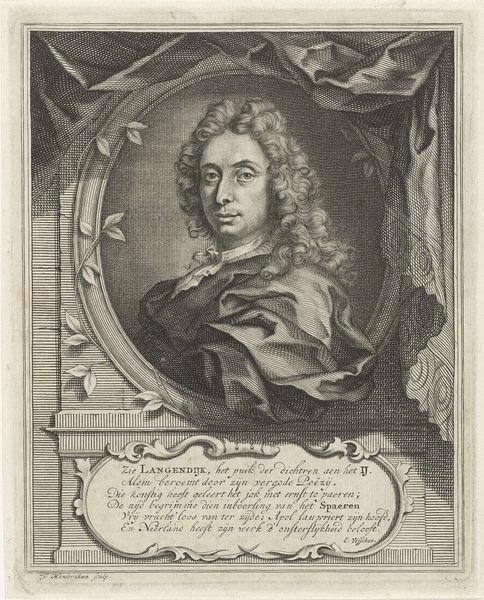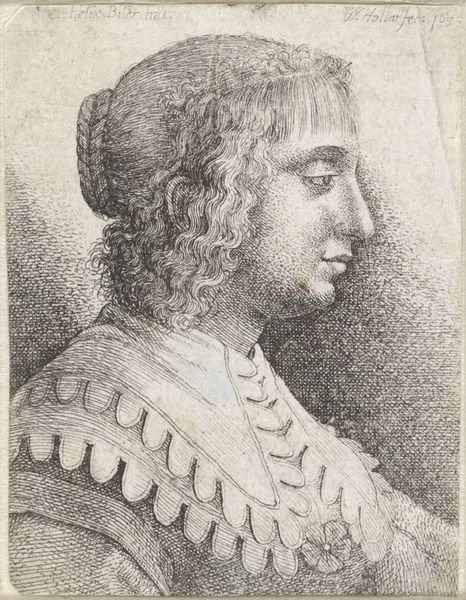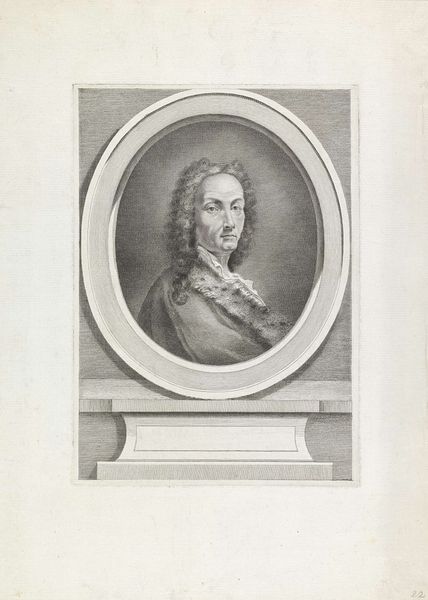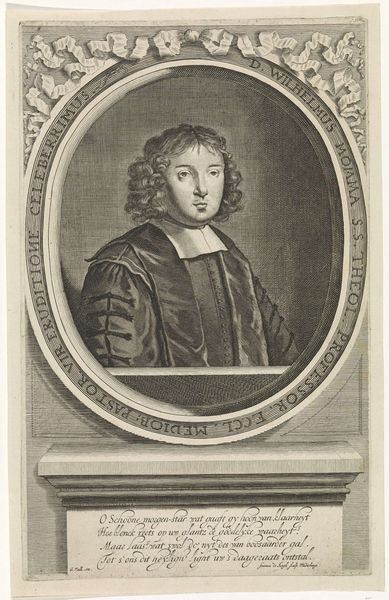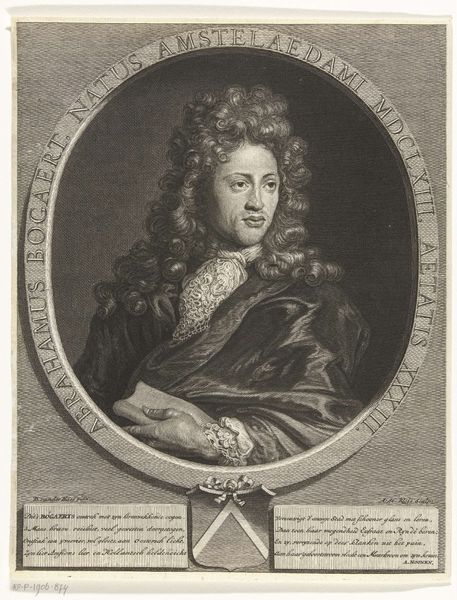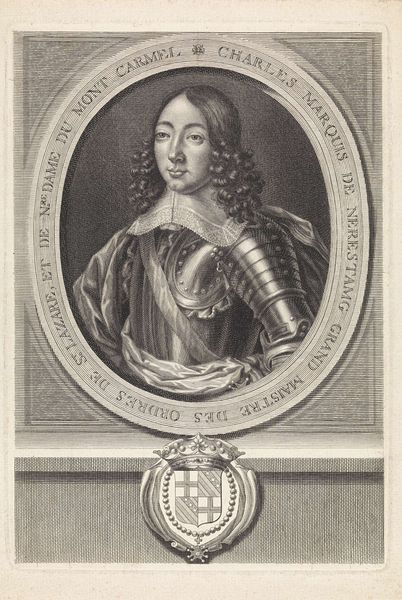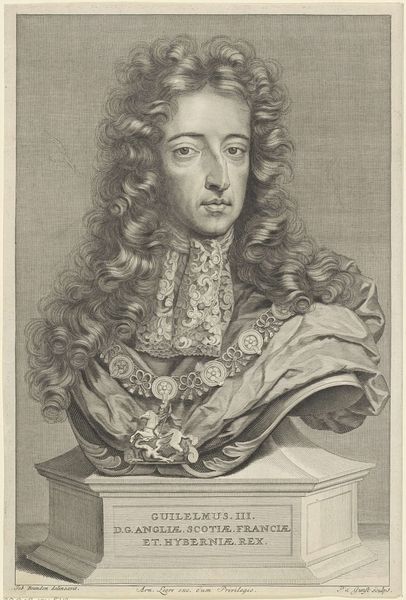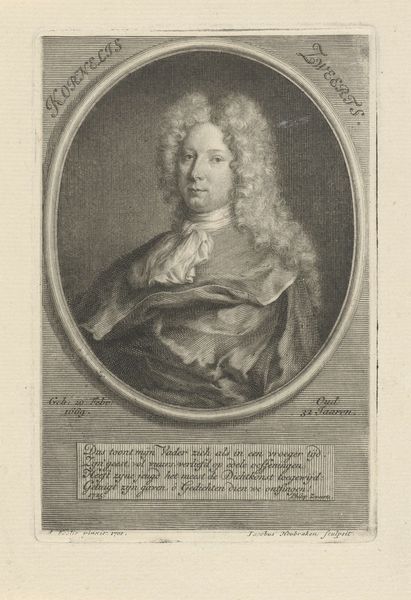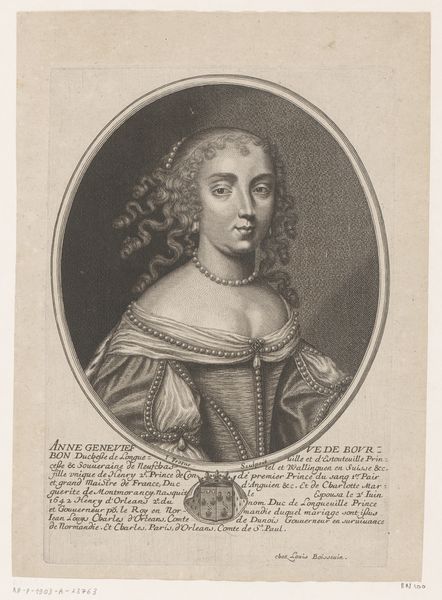
print, engraving
#
portrait
#
baroque
# print
#
old engraving style
#
portrait drawing
#
history-painting
#
engraving
Dimensions: height 190 mm, width 115 mm
Copyright: Rijks Museum: Open Domain
This print, depicting Queen Christina of Sweden, was made by Richard Collin. It’s an engraving, which means the image was incised into a metal plate, likely copper, using a tool called a burin. Ink would have been applied to the plate, then wiped off the surface, remaining only in the carved lines. The plate was then pressed onto paper, transferring the image. Look closely and you'll see the extraordinary level of detail Collin was able to achieve. The lines create a range of tones and textures, from the Queen’s softly curled hair to the folds of fabric draped across her shoulders. Engraving was a highly skilled craft, demanding precision and control. The engraver had to not only be a skilled draughtsman, but also a master of the tools and techniques of printmaking. This print would have been relatively inexpensive, and easily reproduced, making it an effective way to disseminate images of important figures like Queen Christina. So while the process involved considerable labor and skill, it also allowed for a wide distribution of imagery, a distinctly modern phenomenon.
Comments
No comments
Be the first to comment and join the conversation on the ultimate creative platform.
